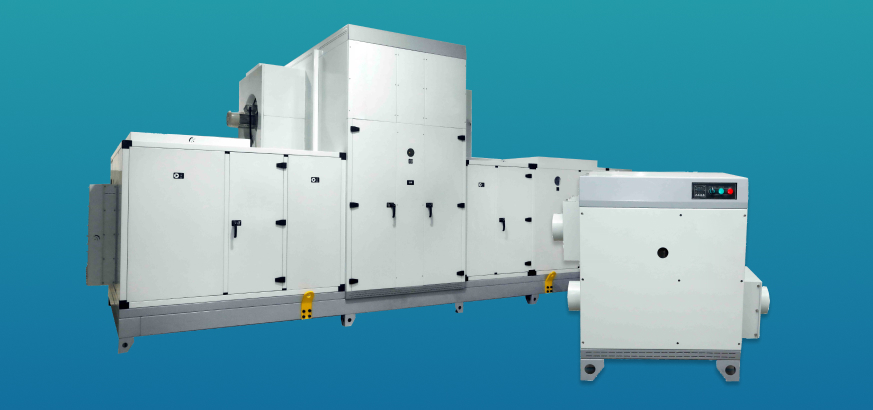Maintaining optimal humidity levels is crucial for both comfort and health, especially in regions with high humidity. Desiccant dehumidifiers offer an efficient solution for controlling moisture in various environments. In this guide, we’ll explore the benefits, working principles, and applications of desiccant dehumidifiers, helping you understand why they are an essential addition to your air conditioning arsenal.
What is a Desiccant Dehumidifier?
A desiccant dehumidifier uses a desiccant material, such as silica gel, to absorb moisture from the air. Unlike refrigerant dehumidifiers, which rely on condensation, desiccant dehumidifiers work effectively even at low temperatures and humidity levels. This makes them ideal for a wide range of applications, from industrial settings to residential spaces.
How Does a Desiccant Dehumidifier Work?
- Air Intake: The unit draws in moist air from the environment.
- Moisture Absorption: The air passes through a desiccant wheel or rotor that absorbs the moisture.
- Dry Air Output: The dry air is then released back into the environment.
- Regeneration Cycle: The desiccant material is periodically regenerated by heating, which releases the absorbed moisture. This moisture is then vented outside.
Benefits of Desiccant Dehumidifiers
- Efficiency at Low Temperatures: Desiccant dehumidifiers perform well in cooler environments, making them ideal for use in cold rooms, warehouses, etc..
- Low Noise Levels: These units tend to operate more quietly than refrigerant dehumidifiers, providing a more peaceful environment.
- Versatility: Suitable for both industrial and residential use, they can handle a variety of moisture control needs.
- Prevention of Mold and Mildew: By maintaining low humidity levels, desiccant dehumidifiers help prevent the growth of mold and mildew, which can cause health issues and damage property.
- Energy Efficiency: Modern desiccant dehumidifiers are designed to be energy-efficient, reducing operating costs.
Applications of Desiccant Dehumidifiers
- Industrial Use: Ideal for Pharmaceutical Manufacturing, Food Processing, Data Centres, Warehouses, and Storage facilities where precise humidity control is essential to protect products and machinery.
- Residential Use: Perfect for Swimming pools, Jacuzzi, and other areas prone to dampness and mold.
- Commercial Use: Suitable for Hospitals, Labs, Clean Rooms and other Commercial Environments where maintaining comfort and air quality is important.
- Specialized Applications: Used in Museums, Libraries, and Archives to protect valuable artefacts and documents from humidity damage.
Choosing the Right Desiccant Dehumidifier
When selecting a desiccant dehumidifier, consider the following factors:
- Capacity: Choose a unit with the appropriate capacity for the size of the area you need to dehumidify.
- Energy Efficiency: Look for models with high energy efficiency ratings to reduce operating costs.
- Construction: Consider the installation feasibility, whether indoor or ambient exposed to select single skin or double skin unit
- Additional Features: Look for features like BMS compatibility, Digital displays, and Automatic shut-off for added convenience and control.
Conclusion
Desiccant dehumidifiers are a versatile and efficient solution for controlling humidity in various environments. Whether you need to protect valuable items in a museum, maintain comfort in your home, or ensure optimal conditions in an industrial setting, desiccant dehumidifiers offer reliable performance and numerous benefits. By understanding their working principles and advantages, you can make an informed decision and choose the right dehumidifier for your needs.
